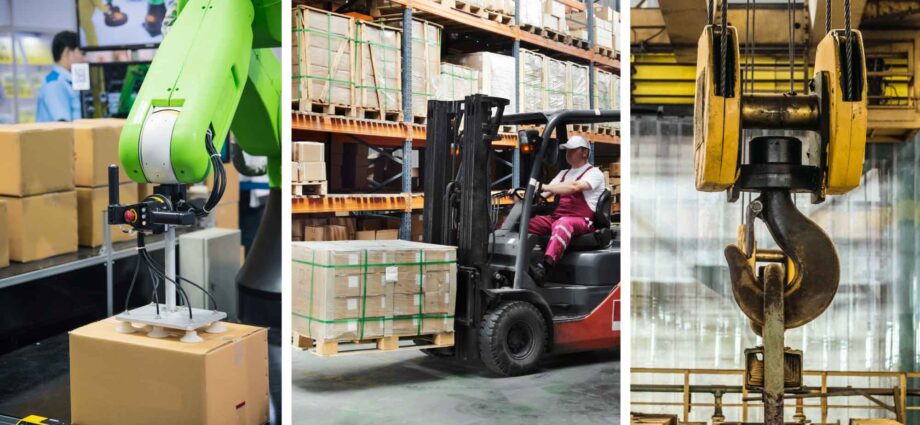Transporting products or commodities from one location to another is known as material handling. This can be carried out manually, mechanically, or by combining both methods. Many industries, including the following, heavily rely on material handling:
- Manufacturing
- Warehousing
- Logistics
Top Industries Inc. is one of the reputed companies supplying different material handling equipment for the above industries. A pallet inverter is one of the important products of this company.
Pallet inversion, also known as the interchange of pallets, is appropriate for a variety of applications.
The rotation of big loads and pallets is made simple by the design’s safety and durability. This entirely eliminates the possibility of loading and unloading accidents.
In the event that tensions arise, manual handling of commodities might be time-consuming and lower workplace productivity. These risks are eliminated by the Pallet Inverter, which also makes pallet interchange and inversion exceedingly easy.
The Pallet Inverter is a floor-level 180⁰ inverter that uses a hydraulic gear motor to provide safe and hygienic load handling. The pallet inverter is the best option when contamination is a concern.
With a pallet truck, this inverter is simple to load, and a forklift may be used to transport it to your facility. The inverter can support loads up to 4000 pounds, and the clamps can be extended and contracted from 67 inches to 29 inches.
Why is this pallet inverter so effective at handling food and medications in a secure manner? The pallet inverter’s engine is securely stored in a covered area at the back of the machine, preventing oil leaks or pouring grease from contaminating your items.
Additionally, the hydraulic motor makes sure that your palletized load turns smoothly and without jerks. There are very few moving parts available on the pallet inverter, making maintenance very simple, and the outside is constructed with slick stainless steel and finished with rust-proof zinc spray.
Material handling equipment comes in a wide variety of forms, each with a distinct function. Typical examples include:
- Conveyor belts
- Forklifts
- Cranes
- Hoists
In order to operate well, material handling systems are sometimes complicated and require careful planning.
Material handling raises serious safety concerns since improper equipment use can result in harm. Before using material handling equipment and processes on the job, employees must receive sufficient training in their utilisation.
What are the possible hazards involving materials handling injuries?
A few potential hazards relating to various materials handling injuries include the following:
- Strains and sprains because of lifting or carrying heavy objects
- Back injuries because of incorrect lifting techniques
- Cuts and bruises due to sharp or jagged edges on different objects being handled
- Slips, trips, or falls from wet or certain uneven surfaces
If any of these risks are not effectively avoided or mitigated, they all run the risk of causing significant damage. To prevent tripping or falling, it’s crucial to always lift heavy goods correctly and to be mindful of your surroundings when carrying anything.
Wear protective equipment as needed if you are working with any sharp objects to prevent cuts. To avoid falls and trips, always wipe up spills right away.
You can follow on Twitter to know the present trends of material handling equipment from Top Industries Inc.

